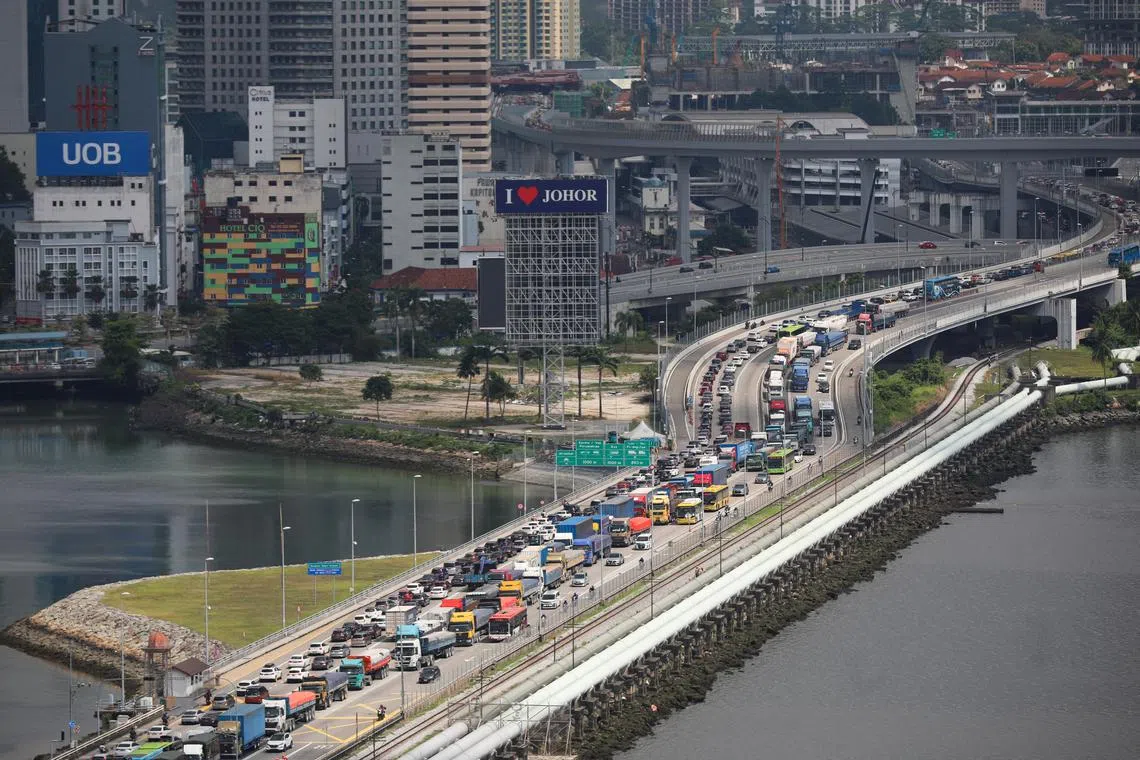Road accidents up in Malaysia’s Hari Raya rush in 2025, totalling over 15,000
Sign up now: Get ST's newsletters delivered to your inbox

For the travel period in 2025, March 29 recorded the highest number of road accidents at 2,040 while the highest number of fatalities was on March 30 (20).
PHOTO: ST FILE
Follow topic:
PETALING JAYA - More than 15,000 road accidents and 123 deaths were recorded in Malaysia during the Hari Raya travel period in April, according to statistics from Bukit Aman’s Traffic Investigation and Enforcement Department.
The total number of road accidents between March 29 and April 6 was 15,246, a 3.8 per cent increase compared with the Hari Raya travel period between April 6 and April 14 in 2024, when the figure was 14,674.
As for the number of deaths related to road accidents, the data showed a 29.3 per cent decline.
A total of 123 people died in road accidents between March 29 and April 6 in 2025 compared with 174 during the travel period in 2024.
For the travel period in 2025, March 29 recorded the highest number of road accidents at 2,040, while the highest number of fatalities – 20 – was on March 30.
The highest number of road accidents during Hari Raya celebrations in 2024 was on April 6 (2,156), while the highest number of deaths was on April 10 (35).
Hari Raya celebrations fell on March 31 in 2025 and April 10 in 2024.
Ops Selamat is a traffic safety operation carried out by the Royal Malaysian Police to ensure safety on all roads in Malaysia during festive seasons such as Hari Raya Aidilfitri, Deepavali, Christmas Day and Chinese New Year.
Statistics showed that during the 2024 operation, which lasted between April 8 and April 13, 8,909 accidents and 111 fatalities were recorded.
For 2025, a total of 9,859 road accidents and 85 fatalities were recorded between March 29 and April 3. This marked a 10.66 per cent increase in the number of accidents and a 23.42 per cent decline in related fatalities.
Road safety expert Law Teik Hua said the drop in road fatalities suggests that emergency response times, vehicle safety standards and possibly even driving behaviour had improved.
“However, the fact that overall accidents increased, albeit slightly, reminds us that the underlying risk on our roads remains high.
“Every crash, regardless of severity, carries emotional, physical and financial consequences.
“The volume of incidents still points to systemic road safety challenges,” said Associate Professor Law, who heads the Road Safety Research Centre at the engineering faculty of Universiti Putra Malaysia.
He said there should be efforts such as strengthening enforcement during peak travel periods, enhancing driver education about fatigue and behaviour like speeding, and ensuring public transport alternatives are safe and accessible.
“Infrastructure improvements like clear road signage, better lighting and speed-calming measures can also help mitigate crash likelihood,” said Prof Law.
He added that real-time traffic data, smart traffic management systems and dashcam artificial intelligence analytics could help identify accident-prone zones and driver behaviour.
“Public campaigns should evolve from awareness to behaviour change, leveraging psychology and targeted communication to truly influence drivers,” he said.
Malaysian Institute of Road Safety Research chairman Wong Shaw Voon urged motorists to drive safely at all times.
“We shouldn’t practise safe behaviour only when we know enforcement officers are watching.
“This is about our own lives, and also that of our loved ones who are with us in the vehicle,” said Professor Wong.
“Enforcement authorities are doing their best to make the roads a safer place, but every road user plays a role towards achieving this as well,” he added. THE STAR/ASIA NEWS NETWORK

